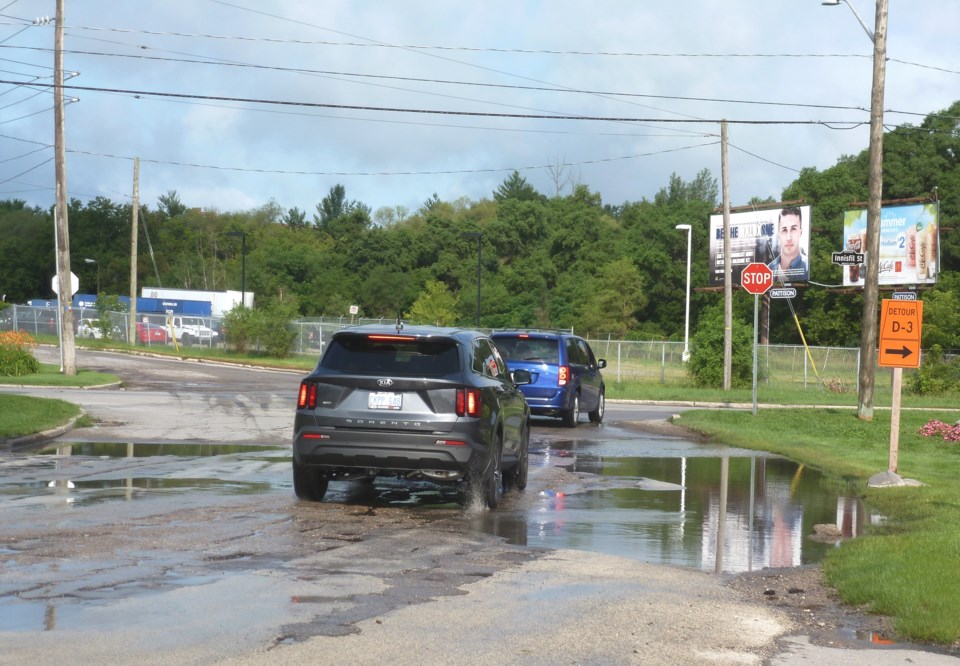Tuesday evening’s deluge of rain came close to overwhelming Barrie’s stormwater system.
Chris Marchant, manager of operations, said Wednesday morning the city’s rain gauge system measured between 35 and 60 millimetres of rain across Barrie in about 90 minutes the previous evening.
“This amount of rain can overwhelm the underground storm sewer system and cause stormwater to flow on the road,” he said. “In most cases, this is how the city’s drainage system is designed - underground pipes for small frequent events and flowing on the road for severe, less frequent events.
“The city is still investigating specific flooding issues in the city, but overall, the system appears to be performing well.”
Marchant did say some parts of Barrie are more prone to flooding when this much rain falls, and so quickly, than others.
“The city is aware of some areas, particularly in older parts of the city, where development occurred in the past without full consideration for extreme events,” he said.
“In these areas there is property and infrastructure at risk of flooding. Through a combination of maintenance and capital projects the city is working to address these known issues.”
Barrie has 400 kilometres of storm sewers which collect rainwater and surface water runoff, mostly from roads and parking lots, into natural channels and catch basins or storm grates, transporting it to various points in Kempenfelt Bay.
The system also includes 880 culverts, 150 km of ditches, 100 km of watercourses, 95 stormwater ponds and 71 manufactured treatment devices - prefabricated structures that use technology to help remove pollutants from stormwater runoff.
“The city is currently undertaking a study called the Stormwater Climate Action Fund, which has the goal of developing a dedicated funding model for stormwater and drainage improvements,” Marchant said. “Having dedicated funding for stormwater will allow the city to continue to make improvements to protect people and property from flooding, as well as protecting the environment from some of the impacts of urban drainage.”
Stormwater infrastructure is required to protect people and property from flooding, and bodies of water - such as Kempenfelt Bay - from any harmful stormwater runoff.
Earlier this year, council approved Barrie’s stormwater asset management plan, which identifies the operations, maintenance work and expansion of $1.25 billion worth of city stormwater infrastructure - including storm sewers, culverts, ponds and watercourses.
The plan is designed to lessen the gap between what the city spends on stormwater management, and what it needs to spend.
It will cost $451 million to sustain the current level of stormwater services during the next 10 years - $232 million for growth and upgrades, $138 for renewal, $65 million for maintenance and $16 million for pond cleanout. More than half of that total could be paid for by new development, but the city’s bill is still substantial.
The funding gap is about $11.7 million annually.
Underspending on stormwater management increases the risk of flooding, infrastructure failure and environmental damage.
The city’s stormwater assets include infrastructure that can be seen - ponds, ditches, the water courses - and those unseen, such as storm sewers.
The physical condition of Barrie’s stormwater infrastructure is generally good, with 79 per cent considered in fair or good condition. This means that the city has time to build financial reserves to fund storm sewer repair and replacement in the future when the assets reach end-of-life.



